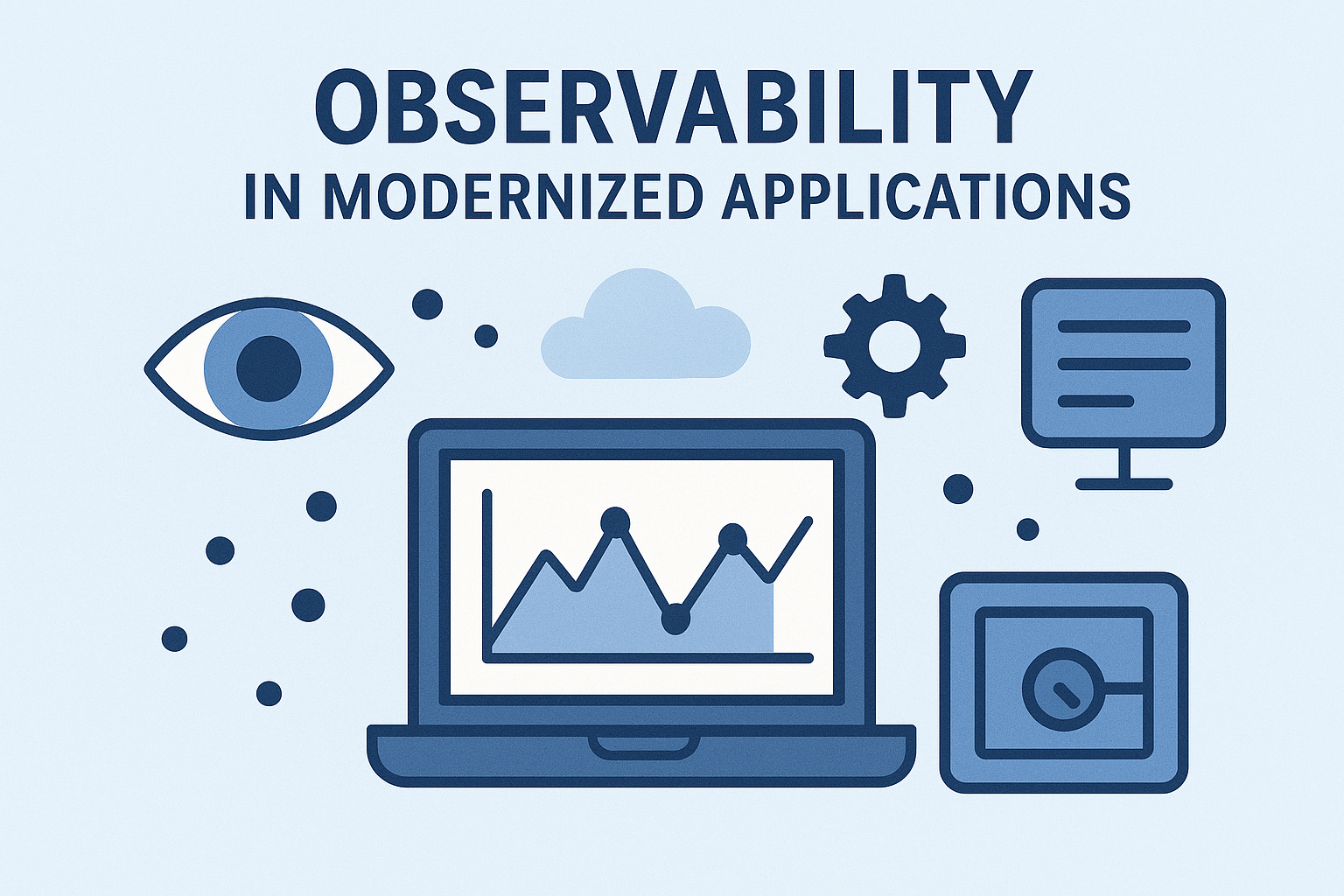In the age of microservices, containers, and distributed systems, debugging a production issue often feels like chasing ghosts in a haunted house. One minute everything is green, the next— orders aren’t being processed, users are getting 500 errors, and your logs show… nothing. That’s where observability steps in—not just as a fancier word for monitoring, but as an engineering discipline that helps you ask and answer the question: “Why is my system misbehaving?” Let’s unpack observability from first principles and see how it empowers you to gain deep insight into complex, modern architectures.
What is Observability (vs Monitoring)?
At its core, observability is a system’s ability to let you understand its internal state based solely on its outputs. Borrowed from control theory, it flips the question: instead of hardcoding every alert or log line in advance, can your system surface enough contextual signals to diagnose unknown, emergent issues?
Here’s how it differs from traditional monitoring:
| Monitoring | Observability |
| Predefined checks (CPU, RAM) | Rich context from logs, traces, metrics |
| Alerts on known issues | Diagnose unknown failures |
| Limited to dashboards | Explorable data and correlations |
Imagine your app as a black box: with monitoring, you peek at a few dials. With observability, you pour in data (logs, traces, metrics) and ask questions you didn’t anticipate when you wrote the code. That’s the real power.
The Three Pillars of Observability
Logs: What happened, and when?
Logs are discrete, timestamped records of events—errors, warnings, business actions (like “Order Placed”), or internal state transitions.
Use structured logs (JSON) instead of plain text for better parsing and querying.
Add rich context—user ID, correlation ID, request path, feature flag status.
Centralize with tools like ELK Stack, Fluentd + CloudWatch, or Datadog Logs.
In one project, we switched from console.log(“error”) to structured logs with request metadata. Debugging user-specific issues went from hours to minutes.
Metrics: What is the system’s current state?
Metrics are numeric summaries collected over time—ideal for trends and thresholds.
System metrics: CPU, memory, disk, request count, latency, error
Application metrics: Orders per minute, payment failure ratio, cart abandonment
Instrument with Prometheus, StatsD, or Cloud-native metrics (like Azure Monitor).
We once caught a hidden bug by watching a rising trend in 99th percentile response time— something a log wouldn’t have captured.
Traces: How did this request flow across services?
Distributed tracing stitches together the lifecycle of a single request as it hops across services.
Each service adds a span with start time, end time, and
Enables root cause analysis for latency, retries,
Use tools like Jaeger, Zipkin, Honeycomb, or OpenTelemetry with a vendor
A customer’s “stuck order” once baffled us—until a trace showed a payment service retrying for 30 seconds due to downstream slowness. Without tracing, we’d still be guessing.
Practical Steps to Add Observability to Your App
Step 1: Instrument Your Code
Start with OpenTelemetry—the open standard for generating logs, metrics, and traces from applications in any language.
Inject trace headers into incoming/outgoing requests (via middleware).
Log key business events (user_signup, payment_success, ) with request IDs.
Expose application metrics via /metrics endpoints or
In our microservices setup, just plugging in OpenTelemetry middleware gave us full traceability between services—no code changes needed.
Step 2: Correlate Logs, Metrics, and Traces
The real magic happens when you tie all three together:
Add trace IDs to log entries (trace_id=abc123) so you can pivot from a log to a
Visualize a trace and zoom into spans that had high latency—and view logs from that
Alert on a metric anomaly, then trace down into logs for root
This correlation saved us during an outage. CPU spiked? Metric told us. Which request? Trace told us. Why? Logs told us. End-to-end in 5 minutes.
Step 3: Build Dashboards and Alerts That Matter
Don’t just alert on raw CPU spikes. Alert on symptoms that users experience:
Error rate > 2% for 5 mins
P95 latency > 5s
Payment failures > 5/min
Group alerts by service, environment, and severity. Create runbooks that explain what to check when each alert fires. One team I worked with color-coded their alerts based on blast radius—red = customer impact, yellow = background failures, blue = dev-only noise. Brilliant.
Step 4: Add SLOs and Error Budgets
Define Service Level Objectives (SLOs)—like “99.9% of checkout requests complete under 500ms”—and monitor how often you exceed them. This builds:
A contract with the business (“This is our reliability target.”)
A signal for engineering (“We burned 50% of our error budget this week.”)
A trigger for action (“Let’s freeze features and fix latency. “)
Tools like Nobl9, Sloth, or Prometheus+Grafana help track SLOs and error budgets.
Pitfalls and Anti-Patterns
Too Much Noise: 10GB of logs per minute is useless if no one can find relevant Sample logs, aggregate metrics, and add filters.
Lack of Context: “Error 500” without request ID or parameters? Enrich every log with business + technical metadata.
Disconnected Tools: Logs in one tool, metrics in another, traces in a third—makes correlation hard. Use a unified platform if possible.
Alert Fatigue: Don’t wake your team at 3am for CPU Tune alerts to real user impact. Silence flaky rules.
Conclusion
Observability isn’t just about pretty dashboards—it’s about engineering insight. It’s your eyes and ears into a living, breathing system that’s growing more complex by the day. Logs tell you what happened. Metrics show system health. Traces reveal the journey. When wired together, they give you superpowers: to find, fix, and prevent problems before your users notice them. So don’t wait for the next mystery outage—invest in observability today, and make your systems (and sleep) more reliable than ever.
Ready to start? Add a trace header to your app’s first request, log a sample event with context, and expose a custom metric. You’ll be amazed what you can learn from your own system.





